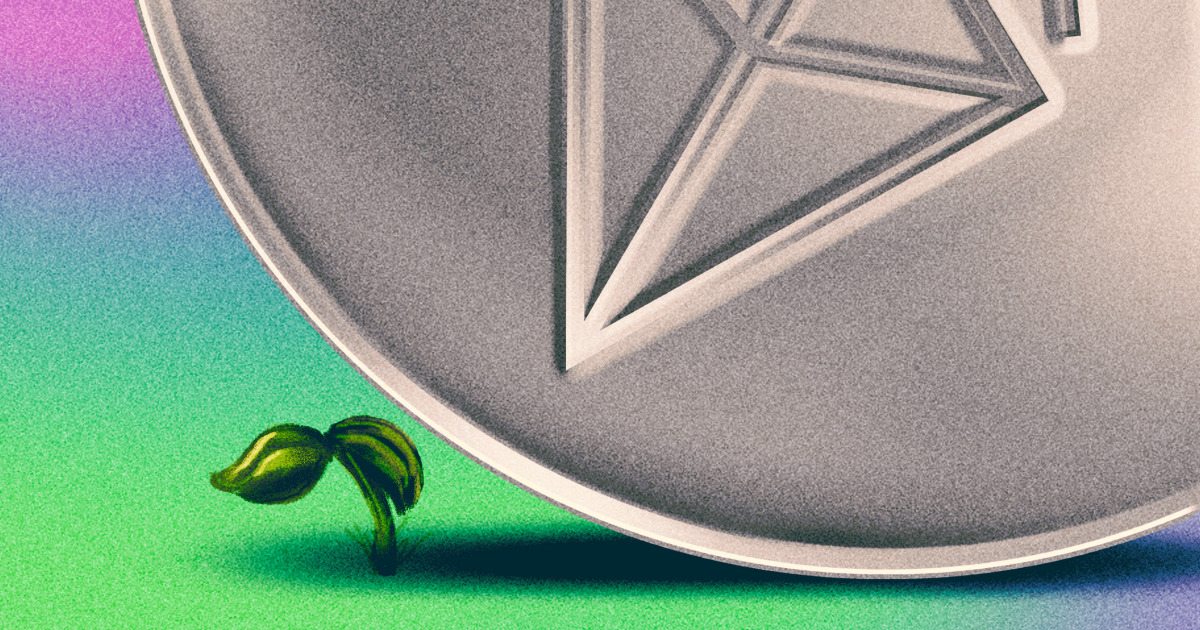The many features of Blockchain technology have made it a hit in the art world, primarily the ability to prevent counterfeiting and give artists a share of future sales.
But one of the less-advertised features of the blockchain has caused a kind of crack in the art world: its carbon footprint.
Crypto art, which was seen as a space for artists who sought resale rights and stronger protections against copyright infringement, as well as a more inclusive scene than traditional institutions in the art world, is at the center of a heated debate about its impact on the environment. And many in the community are responding to the call to abolish existing processes for greener alternatives.
“Every artist I spoke to doesn’t want to destroy the environment,” said Stuart Campbell, an Australian artist who serves for Sutu. “This is a great place to start the conversation.”
Sutu is the moderator of a group on the Discord chat app called Clean-NFTs, a channel that started in recent weeks to talk about the ecological impact of crypto art, which now has more than 1,000 members. Sutu said his investigation into the environmental impact of crypto began when a fan of his art responded to one of his tweets promising not to follow anyone else in the community because of the environmental impact of NFT art.
In simple terms, cryptographic art is digital art, but on the blockchain. This crucial difference creates an incorruptible platform for selling and collecting digital art. That’s because each work of art is coined with a unique non-fungible token, known as NFT – a kind of digital certificate of authenticity or “proof of work”.
The world of crypto art has grown a lot in recent months, with a piece of art and its NFT being sold recently at a Christie auction for $ 69 million. Artist Grimes sold $ 6 million worth of art supported by the NFT.
But the physical processes that many platforms use to code the art on the blockchain use electricity – and a lot. Computer artist and scientist Memo Akten wrote a Medium blog post in December detailing “how absurdly energy-consuming and ecologically destructive some blockchain-based activities are”.
The post took off online – not only in the artistic community, but also among environmentalists and technologists – leading artists and consumers to reevaluate how they approach the space of crypto art. Akten tracked his posts and his carbon emissions calculator (which was recently deactivated because of abuse and harassment) with an eco-encryption guide.
Akten said he thinks the community is divided. Some artists and fans are shutting down completely until sustainable solutions are created. And there are those who totally deny the energy-consuming reality.
“There is very strong propaganda based on disinformation in the cryptographic world in general to deny the ecological impact of blocks of blocks based on proof of work,” said Akten. “It is reminiscent of the oil and tobacco industries.” Akten said that there are also “many issues, comparing the numbers with the carbon footprint of the banking sector, fast fashion, McDonald’s, etc.”
But there is also an impulse to find more energy-efficient systems that preserve the advantages of encryption.
Proof-of-work is the computing process in which the encrypted art market has established its foundation, but the process uses a lot of computing power. Sutu and others pointed out betting proof, a much more efficient process, as a better way forward.
Unlike proof of work, which consumes electricity while computers create extremely complex puzzles like “proofs” to verify transactions, proof of bet promotes reliability with a financial incentive – users deposit part of their cryptocurrency as proof that they are and that they have a personal interest in the accuracy of the system.
As engineers work to advance to the participation test, “what the community itself needs to do is take some responsibility for what we can do in the short and medium term,” said Jason Bailey, who started art analysis and the art blog digital Artnome.
Bailey said he noted that artists with diplomas or day jobs in technology were, in some cases, shaming artists who come from less privileged backgrounds and rely on the new crypto market to feed themselves and their families, instead of working as a complement .
“I don’t dislike either side of these groups and it bothered me to see so much emotional and human energy being burned without much progress being made,” he said.
And then Bailey launched Green NFTs, a reward system for creating greener NFT systems, encouraging people to donate money to a common cause. For that reward, part of the money will go towards creating a consolidated body of research for artists and collectors and part will go to developers who create open source solutions. The grant raised more than $ 34,000.
Panels are also being formed in response to the speech. Sutu moderated the conversation “Environmentally friendly NFTs: are they bulls —?” on the Clubhouse social audio app last month and moderated a panel on the community response this month on Twitter Spaces.
It is not uncommon for viral outrage to fade, but the talk about the environmental damage of NFTs shows no signs of slowing down. And it is not inherently a doomerism mentality – it is a turning point at which artists and gatekeepers can ask for and create more energy efficient systems, without eliminating the ethos of the decentralized creative economy.
Sutu said that while the art world may be just a small part of the broader blockchain community, it still has the opportunity to take responsibility and show a better way forward.
“We can still lead when we see an opportunity to lead in our industry,” he said. “We saw alternatives available to be more energy efficient. Why not jump in now, why not show the way, why not show how the artistic community can influence these other industries to follow suit, especially if they are interacting with the blockchain? ”

